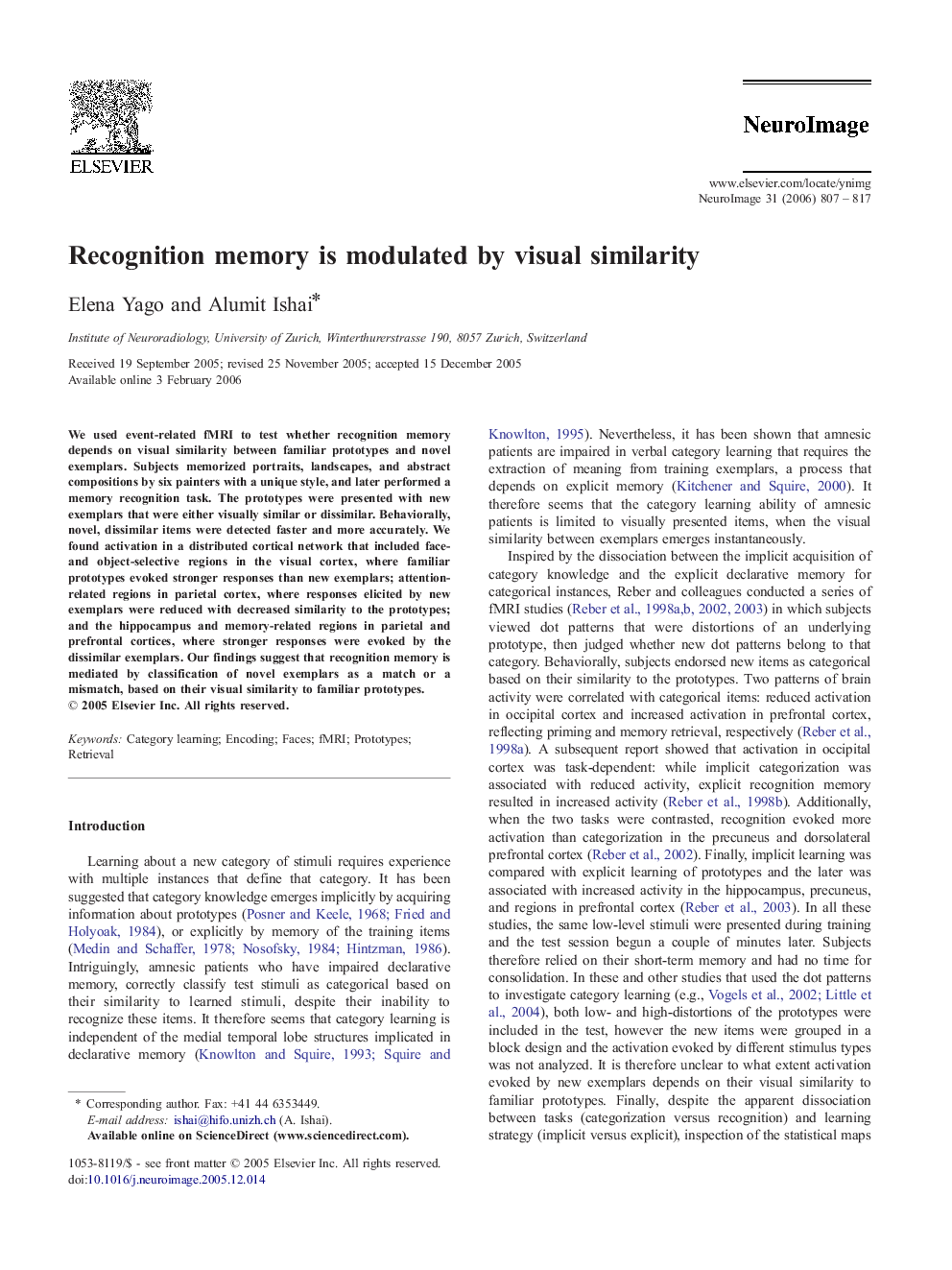| Article ID | Journal | Published Year | Pages | File Type |
|---|---|---|---|---|
| 3073750 | NeuroImage | 2006 | 11 Pages |
We used event-related fMRI to test whether recognition memory depends on visual similarity between familiar prototypes and novel exemplars. Subjects memorized portraits, landscapes, and abstract compositions by six painters with a unique style, and later performed a memory recognition task. The prototypes were presented with new exemplars that were either visually similar or dissimilar. Behaviorally, novel, dissimilar items were detected faster and more accurately. We found activation in a distributed cortical network that included face- and object-selective regions in the visual cortex, where familiar prototypes evoked stronger responses than new exemplars; attention-related regions in parietal cortex, where responses elicited by new exemplars were reduced with decreased similarity to the prototypes; and the hippocampus and memory-related regions in parietal and prefrontal cortices, where stronger responses were evoked by the dissimilar exemplars. Our findings suggest that recognition memory is mediated by classification of novel exemplars as a match or a mismatch, based on their visual similarity to familiar prototypes.
